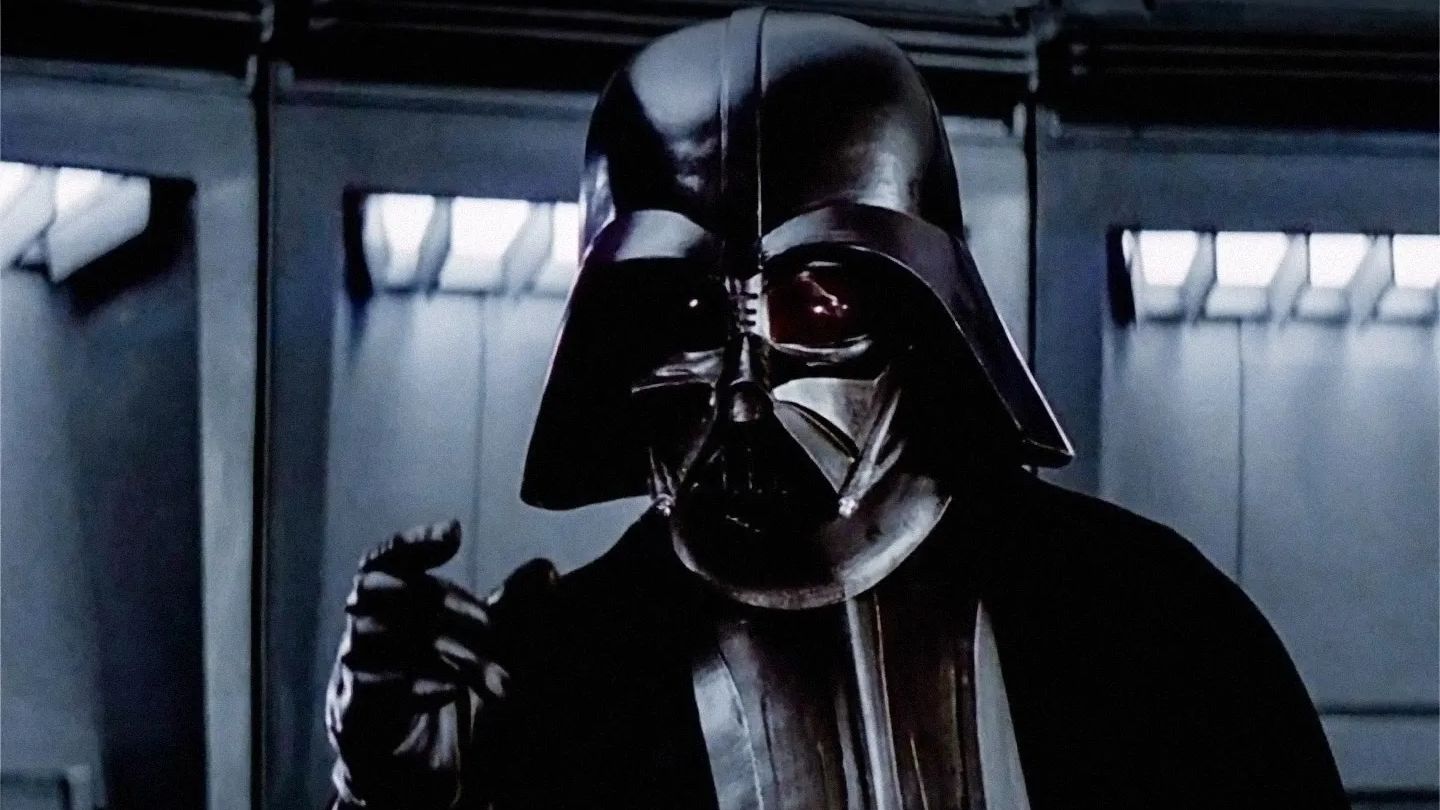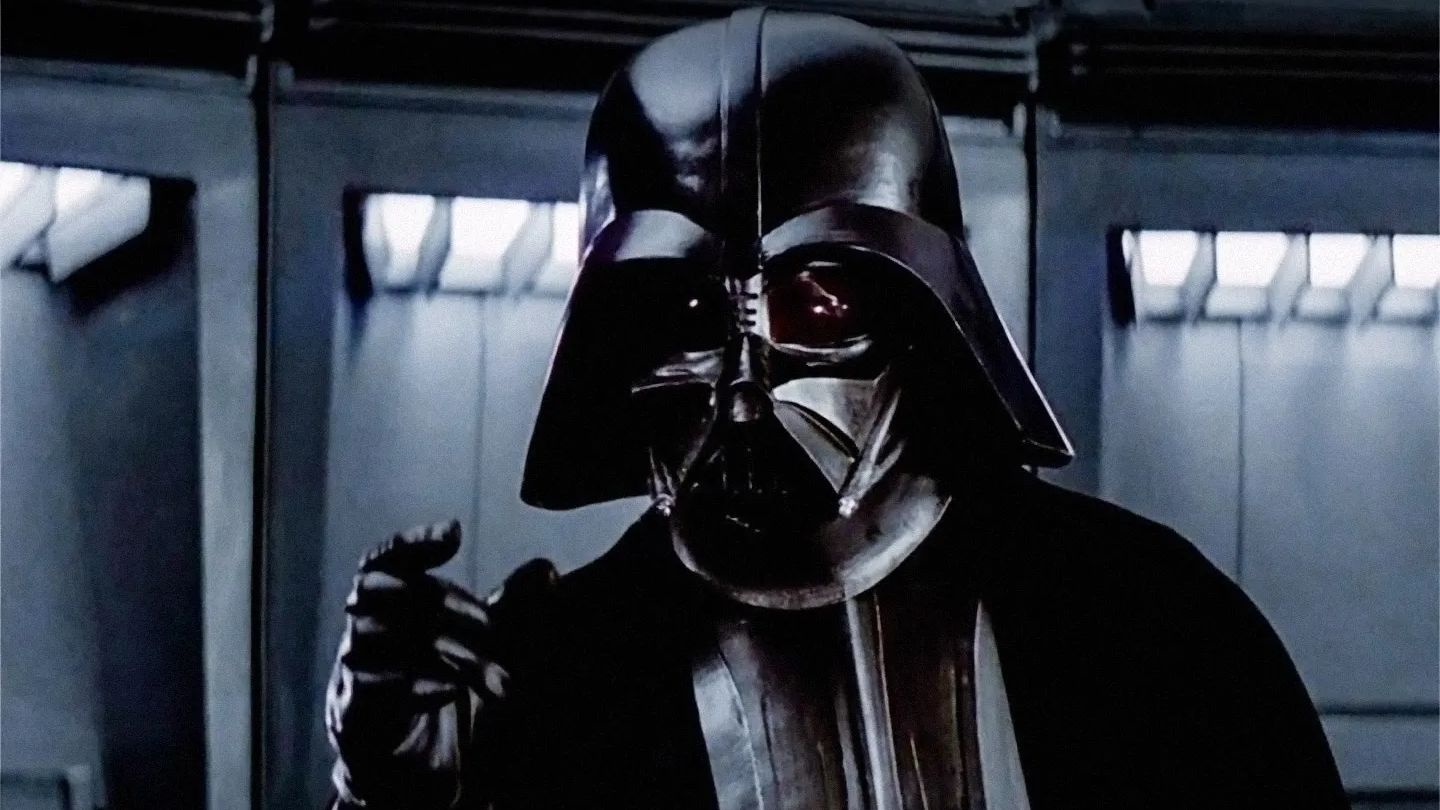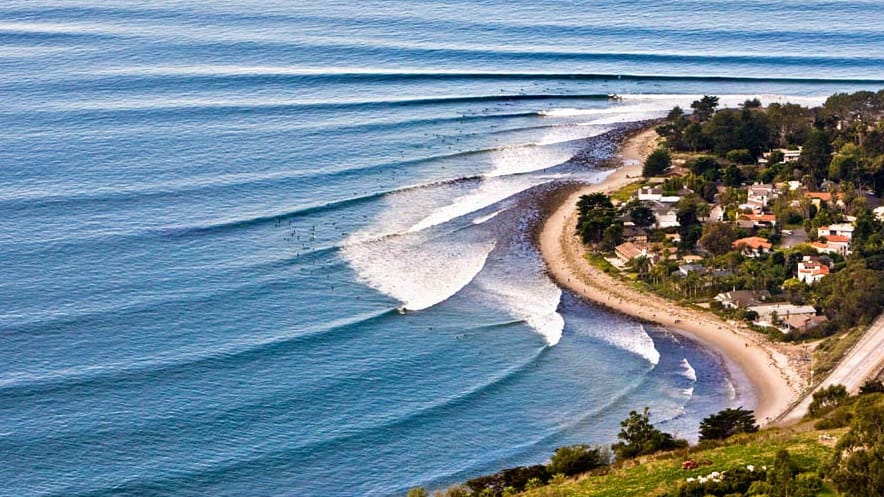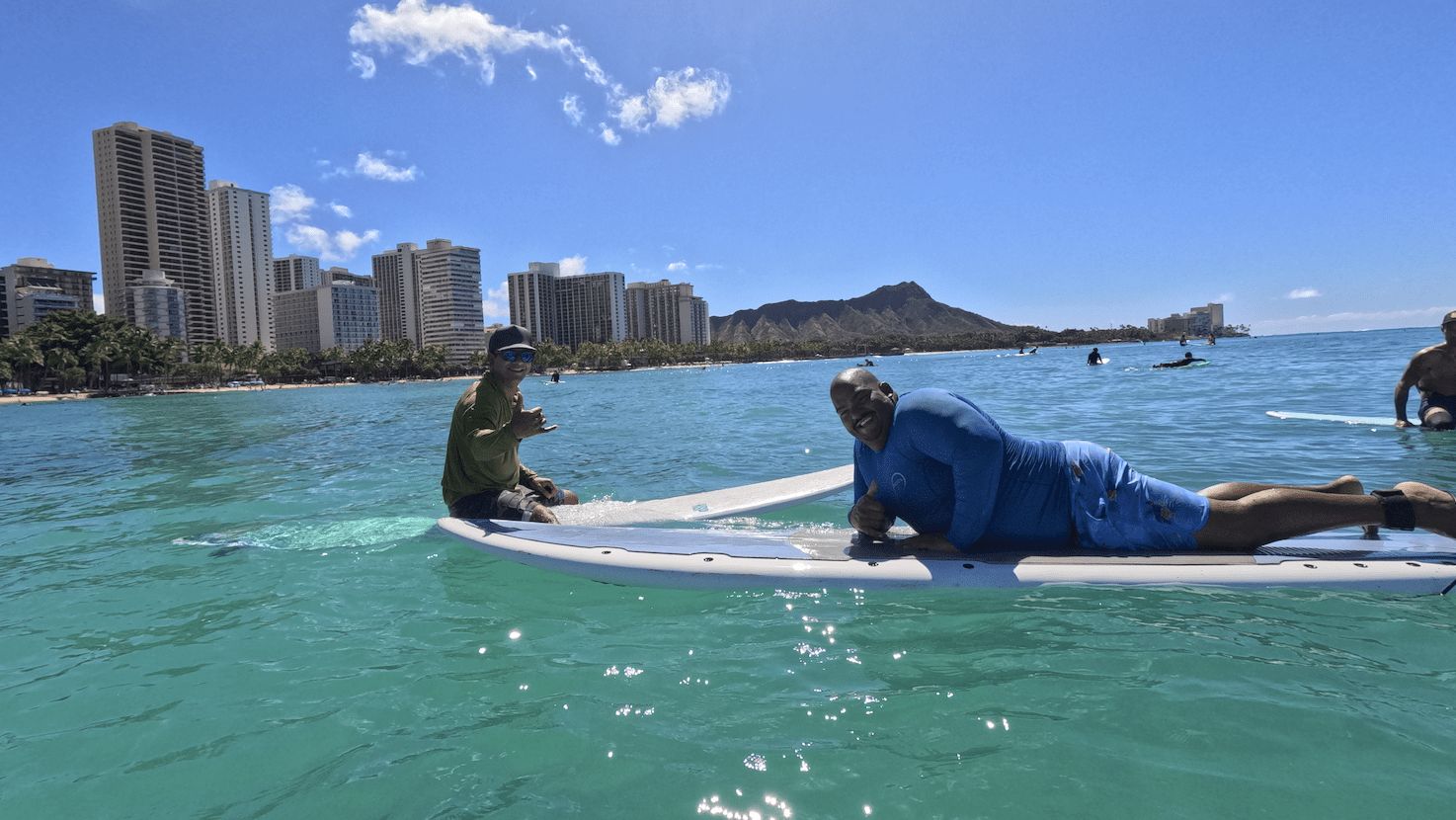- The Wipeout Weekly
- Posts
- 🏄♀️ Why won't you just wear a helmet? 🪖
🏄♀️ Why won't you just wear a helmet? 🪖
Plus: Surfing with sore shoulders, why Gidget matters, Rincon vs Malibu, and a little big news

👋 Happy Kooksgiving! It’s like Thanksgiving in the U.S.—which is next week—but we celebrate the gift of surf. And the fact that there’s no newsletter next week, because emails in your inbox will increase by 25–40%. You are welcome! 🤗
🏄♀️ Let’s surf:
Why won’t you just wear a helmet? 🪖
Rincon: Malibu’s little sister 👯♀️
Gidget is the girl who changed surfing 🏄🏻♀️
Shoulder burn is a real pain 😫
Big news and surf news 🗞️
SURFODRAMA
😱 Why won’t you just wear a helmet? 🪖

I didn’t see this coming, but here we are—we’re going to be talking about wearing helmets in the lineup. Whether you’re ready or not, the helmet revolution may be arriving at your surf spot sooner than you expect.
🧢 What’s on your head when you paddle out?
There’s a good chance that the last time you paddled out and thought about what you’re wearing on your head was…probably never. Honestly, the only time I think about wearing a hat in the surf is when I get mightily frustrated with my hair ending up on my face and blocking my vision.
As for helmets, I might see one once every three weeks at my local break, in the distance. But I can go months without seeing one, too.
But when you see investors on Shark Tank jumping at the opportunity to invest in a surf helmet brand, and when you hear stories about young surfers at Pipeline now opting for helmets—because their friend almost died hitting the reef—you gotta ask yourself: is the helmet-wearing tide about to shift?
Whatever the reason, it looks like now’s the time to talk about surf helmets.
🕰️ A little helmet history
If you’re new to surfing, you may not even be aware that helmets were rarely seen in surf lineups before the 2010s.
Only big wave surfers and some water patrol teams began using them more regularly post-2015, especially at reef breaks. Two prominent surfers who embraced helmets were Owen Wright after his 2015 brain injury, and Kalani Chapman after a 2017 near-death wipeout.
❓ But do they work?
Unsurprisingly, many surfers questioned the efficacy of helmets.
What if they scoop up water during a wipeout, potentially causing whiplash? What if a helmet compromises a surfer’s overall sense of balance? What if you can’t hear?
And—God forbid—a helmet-wearing surfer gets cocky, overconfident, and a false sense of security leads them to take risks beyond their skill level, affecting other surfers?
🧾 Why surfers are considering them now
More and more surfers are considering helmets for a variety of reasons. Some—after close calls or traumatic incidents. The common triggers, I’d call them “after the fact” moments, are when their head hits the reef, they take a board to the head, or they get knocked out.
Other riders see them as a solution to medical conditions they’ve been dealing with—like prior TBIs, concussions, or neurological vulnerabilities. For others, it’s protection from cold water, surfer’s ear, even cancer risks. And some just want to feel safer in crowded lineups, bigger wave conditions, or shallow waters.
Helmets get “cooler” and more acceptable in the lineup every year. But if you’re considering one, it’s worth knowing what they’re good for—and what they’re useless for.
🩹 What helmets can do
Worried about skull fractures, scalp lacerations, cuts from fins or rails? A helmet is your friend.
It may also protect you from minor knocks from boards during wipeouts, and it will offer some impact reduction on reefs or rocks.
🧠 What they can’t do
But no surf helmet is guaranteed to prevent concussions—and no surf helmet will protect your neck.
No helmet on the market has top-tier lab ratings for rotational or impulse force protection (Virginia Tech Helmet Lab results). In plain speak, the former relates to how well a surf helmet deals with the forces that contribute significantly to concussions and brain injury. The latter—how well a helmet absorbs impact forces—basically how hard the blow is, and how much of that force is transferred to the head.
The Virginia Tech Helmet Lab is an independent research lab that tests helmets and publishes performance ratings based on how well they protect the head in realistic impact scenarios—so it’s definitely worth checking their ratings before you buy a surf helmet.
🛠️ So many options, so little sizing
Honestly, we probably need a separate guide to surf helmets, because there are so many things to consider.
We’ve got hard shell helmets like the Gath models (Neo, EVA, Gedi)—they’re the most common, also the most polarizing. There’s Simba from Surftech, which apparently offers better coverage for chin and temples but ends up bulkier as a result. And a new entrant—Oakley WTR Icon—a newer, premium option.
Then we enter the universe of shell+hat combos and soft helmets.
The Shark Tank star Surf Skull offers a soft shell+brim hat hybrid. DMC Soft Surf Helmet is supposed to be good for sandy breaks and lower-consequence wipeouts. Manera is an interesting one—it’s a soft shell that hardens on impact. That’s a feature of it being made from non-Newtonian material. Olaian from Decathlon is a popular budget option.
🤷♀️ Why wouldn’t you wear one?
Is there a case against wearing a surf helmet? There’s a bit of a kook factor, stigma, and the “I don’t want to stand out” mentality—but that’ll change with time.
The bigger challenge is that helmets offer limited protection, and won’t help much with serious concussions or spine injuries. And because they’re still relatively new, sizing hasn’t caught up, and the newer, cooler brands sell out very quickly. Plus—here’s yet another purchase you need to make to go surfing.
How much should you expect to pay for a helmet? Depending on what it’s made of, anywhere from $50 to $200.
🏁 Should you get one?
Only you can tell.
In 2024, the International Surfing Association (ISA) recommended protective headwear for athletes competing at Teahupo’o in the Olympics.
And now think about this: in snowsports, helmet use went from about 25% in 2002 to around 90% in 2023 among skiers and snowboarders.
Just something to think about.
WAVE OF THE WEEK
🌊 Rincon: Malibu’s little, colder sister

Did you know Malibu had a sister? She’s called Rincon, and you may know it as that surf spot where dolphins frolic with surfers. But despite having three points just like Malibu, these spots have a different surfing vibe. Malibu is warm and sun-washed, Rincon is on the chiller side, in the low to upper 50s. So not twin sisters then.
Rincon is often dubbed the “Queen of the Coast” and is widely regarded as one of the most iconic surf breaks in the U.S., beloved for its long right‑hand point waves. You can find it in Southern California—specifically, Rincon Point inhabits the borderline between Santa Barbara County and Ventura County.
🔀 Three for the price of one
And you get three for the price of one, because Rincon enjoys a three‑section setup that offers distinct surf zones:
Indicator is the outermost section—it’s exposed and often the biggest when swell is strong. A thicker wave that often runs for 75 yards before hitting a section in front of the Rincon Creek rivermouth.
The Rivermouth (or Second Point) is the middle section—often more accessible but still powerful. It breaks for about 50 yards.
The Cove is the innermost section and most famous for long peeling rights that run down the point for up to 300 yards. Matt Warshaw calls it “so perfectly tapered as to be nearly hypnotic” in the Encyclopedia of Surfing.
When conditions align—right swell direction, period, tide, wind—all three sections can link into one long ride. According to Matt Warshaw, Rincon “is best from four to eight foot; it can get up to 12 foot, but waves of that size are often stormy or weather-beaten. Five-hundred-yard-long, 90-second rides from the Indicator through to the Cove are rare but possible on bigger swells.”
🗓️ Best time to go
If you want to try it, now’s the time—because Rincon season starts in late fall and runs through spring. For the best waves, you’ll need a west to northwest swell that wraps correctly into the point. Low‑to‑mid tide is often preferred. And let’s not forget offshore wind. Don’t we all like a bit of offshore.
Rincon is iconic, so obviously it gets nutso busy when it works. But if you know what you’re doing, it’s worth the stress.
🧓 Surf history throwback
The first person to surf Rincon is universally recognized as Santa Barbara County lifeguard Gates Foss in either 1938 or 1939, according to the Encyclopedia of Surfing. He called the break "Three Mile," as it was located three miles below the town of Carpinteria.
In the late ’40s, Malibu surfers descended onto Rincon—including Bob Simmons, Joe Quigg, and Matt Kivlin. Super fun fact: apparently Joe Quigg designed what many people regard as the first specialized big-wave surfboard in 1948, after waking from a dream in which he had connected a wave from the Rivermouth into the Cove.
📝 A wave so perfect, it’s rude to move
"At times the wave is so close to perfection," surf journalist Bill Cleary wrote of Rincon del Mar (Little Corner of the Sea) in 1966, "that maneuvering—nose rides, turning and cutbacks—seems inappropriate, an insult to the dignity of the wave."
So close to perfection… but according to the Encyclopedia of Surfing, sewage runoff has traditionally been a problem over the years. The Rincon surf was declared off-limits 84 times by county officials between 1996 and 1998 due to high fecal bacteria counts.
Not entirely sure how much better it’s gotten in recent years, but nearby Goleta Beach experienced a massive sewage spill in early 2024. What’s worse—they forgot to tell everyone and didn’t close the beaches for about six days.
Still, Rincon was included in Surfing magazine's 1981 list of the "Ten Best Waves in the World." In Surfer magazine's "100 Best Waves in the World" article, Rincon polled at #19.
In short: if you can surf it, do.
SURF THRU HISTORY
🏄🏻♀️ Gidget is the girl who changed surfing forever

Have you ever seen the movie Gidget? There’s a good chance you haven’t. And that you won’t. So let us tell you about it—because without Gidget, surfing wouldn’t be what it is today.
Oh Gidget. There’s surf culture pre-Gidget, and post-Gidget. According to Los Angeles Magazine:“ It was Gidget, along with the Beach Boys, who gave surfing its most memorable turn in the great American youth culture parade.”
The girl who inspired Gidget used to babysit my neighbor. That was Kathy Kohner, who grew up in Brentwood, L.A., and learned to surf in Malibu in the 1950s.
Imagine—one day you’re a five-foot, 95-pound teenager; the next, a surfing icon with a book, a movie, a TV series, even a comic dedicated to your adventures.
SURF SKILLS & SCIENCE
😫 Shoulder burn is a real pain for surfers

Shoulder burn. To me, it’s that feeling you get after a session where some of it’s the good pain—hey-I’ve-exercised pain. And some of it is that kind of exhaustion that makes you rethink your life choices. Like: is surfing life?
We’ve put together a list of what to do when your shoulders hurt, when to be concerned, and how to just... let it go.
THE WIPEOUT WEEKLY SURF NEWS ROUNDUP
🗞️ Surf lessons go free. Nazaré goes boom. Coral goes into labor. Carissa comes back. Skiers back off. A 10-year-old keeps her hand.

🏄♀️ Free surf lessons in Waikiki? You better believe it.
A trio of locals is giving strangers their first waves—for free—via the First Wave Project, no signups, no catch.
🌊 Nazaré hit by 40-foot bombs, big wave carnage, and jet ski saves
Portugal’s most infamous break kicked off the season with monster swells, near wipeouts, and epic footage.
🪸 This story has been months in the making—we give you: coral babies.
Florida scientists are midwifing thousands of heat-resilient coral larvae to help save reefs from climate collapse.
🐬 Carissa Moore is back—and we’re collectively losing our minds over it
The five-time world champ returns to the WSL in 2026 with a wildcard and a Pipeline finish—after surfing Teahupo’o while pregnant.
🏄♂️ U.S. Ski & Snowboard comes to its senses
After a year of drama, the winter sports org has backed off its Olympic turf war—leaving USA Surfing to reclaim control.
🦈 Not your usual shark story: 10-year-old girl’s hand saved after near-amputation
A Florida girl nearly lost her hand to a bull shark—but thanks to a tourniquet and wild reconstructive surgery, she’s now knitting with it.
THE WIPEOUT WEEKLY AHEAD
🚀 Organizing surf retreats? Running a surf business? Good times ahead!
For the past few months, we’ve been working on something big: a location-based “platform” for The Wipeout Weekly’s All Things Surf Directory.
Imagine one place to find anything and everything surf-related.
Want a custom board? Here’s your local shaper. Traveling to surf? Check out surf-side lodging, board rentals, and the coffee shop with good WiFi. Got a week to spare? See all the upcoming surf retreats.
We’re talking: local meetups, destination photographers, upcoming events, wavepools, online surf workshops... There are no limits to our surf directory 😜
Now we’re calling on anyone running a surf business to raise your hand—so we can send you early access. You’ll get a link to add your business, listing, rental, or upcoming retreat.
And yes—it’s all free. 🥰
Just reply to this email and we’ll send you more info next week!
P.S. If you’ve already submitted your business via the Google Form, no need to reply. You’ll receive an email soon with details on how to edit and manage your listing.
⬆️ Aaaaaaand that was the last wave of the week!
If a friend forwarded this and you liked it, hit subscribe & join us! We will see you all next week! 🌊
🏄 How was this week's edition of The Wipeout Weekly?Drop in with your pick 👇 |
HOUSEKEEPING
More than a newsletter: You can find more stories+ on The Wipeout Weekly website.
Join us: If you’re not a part of our group yet, join Girls Who Can’t Surf Good.
Feedback: We do want to hear from you! Whatever is on your mind, drop us a line.

Reply